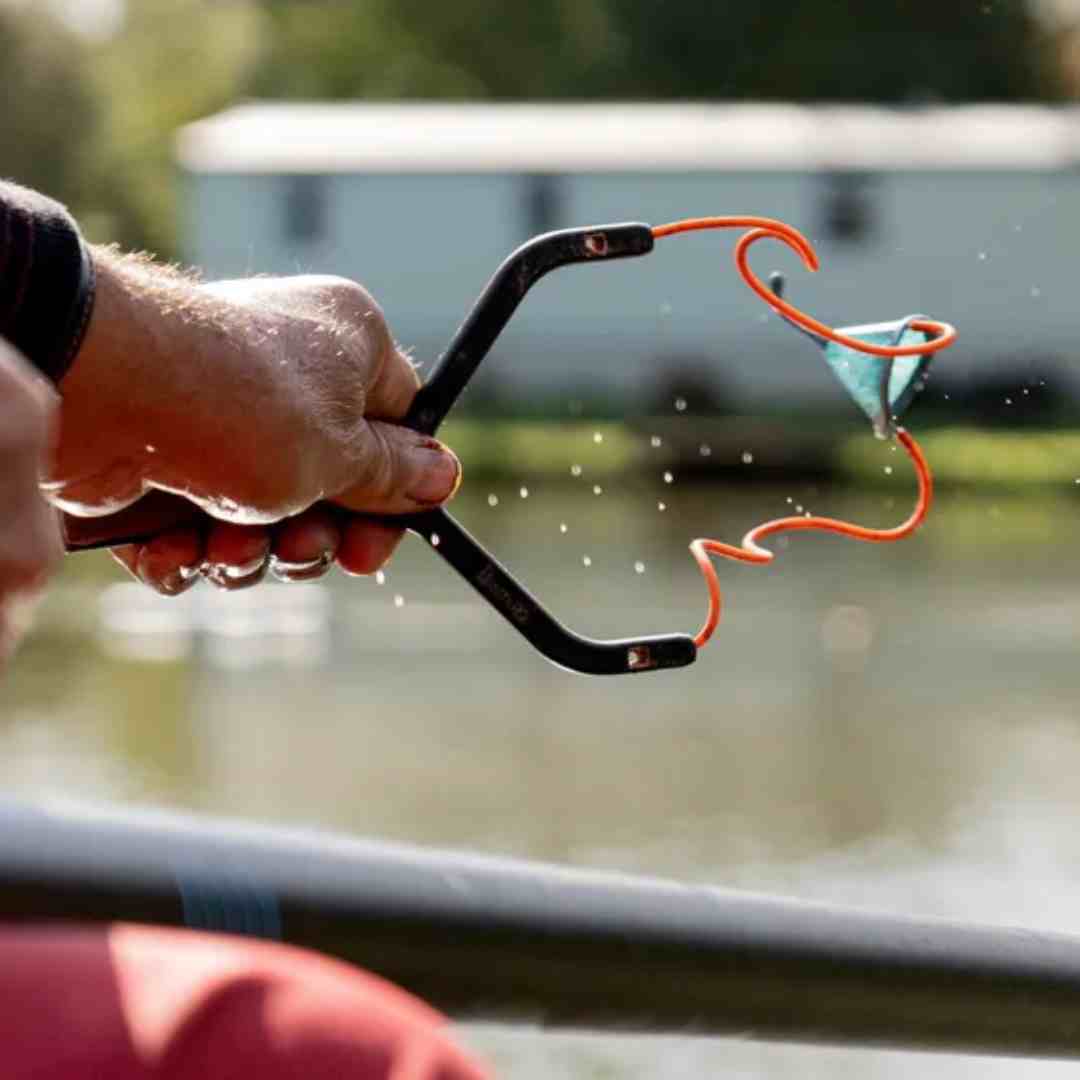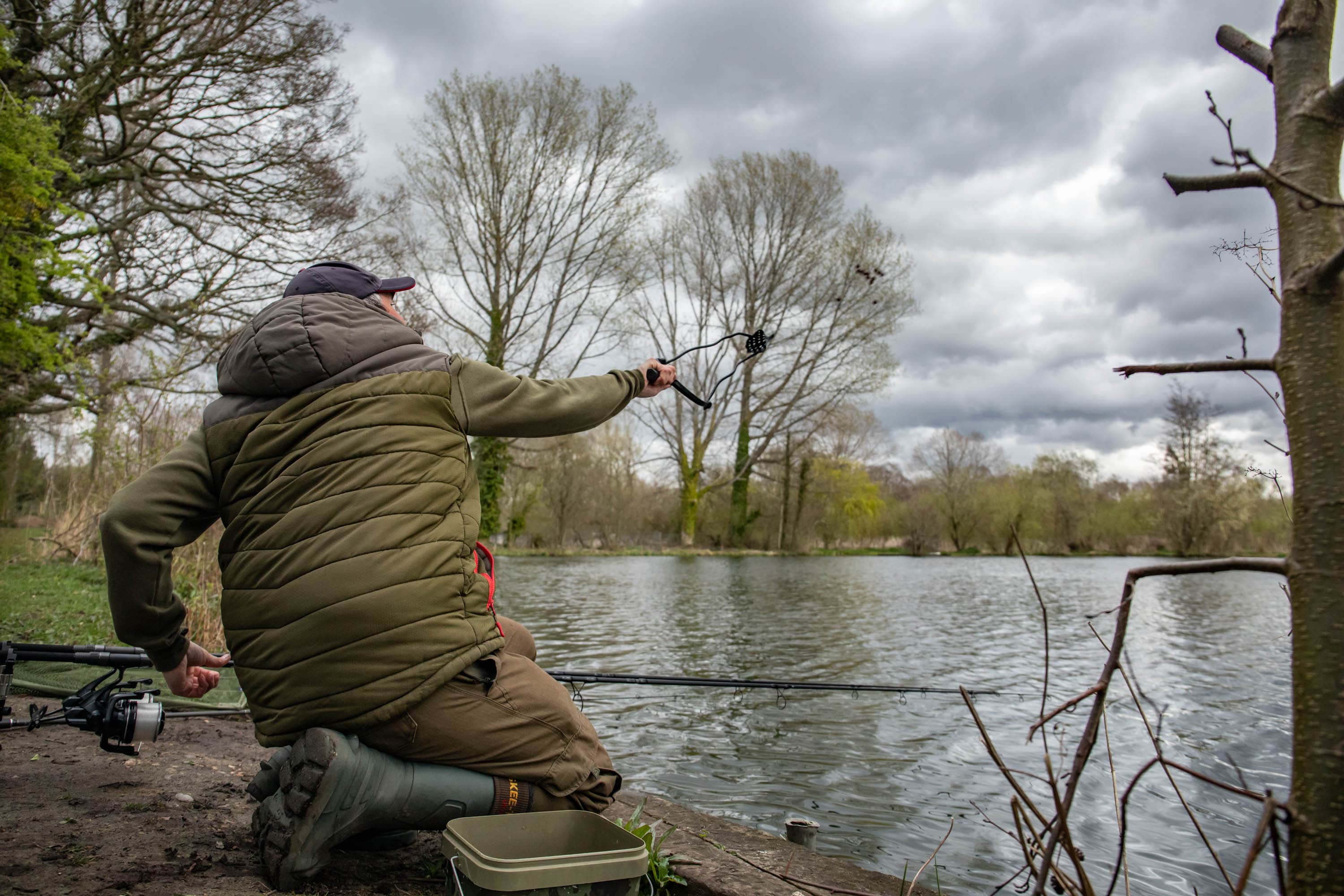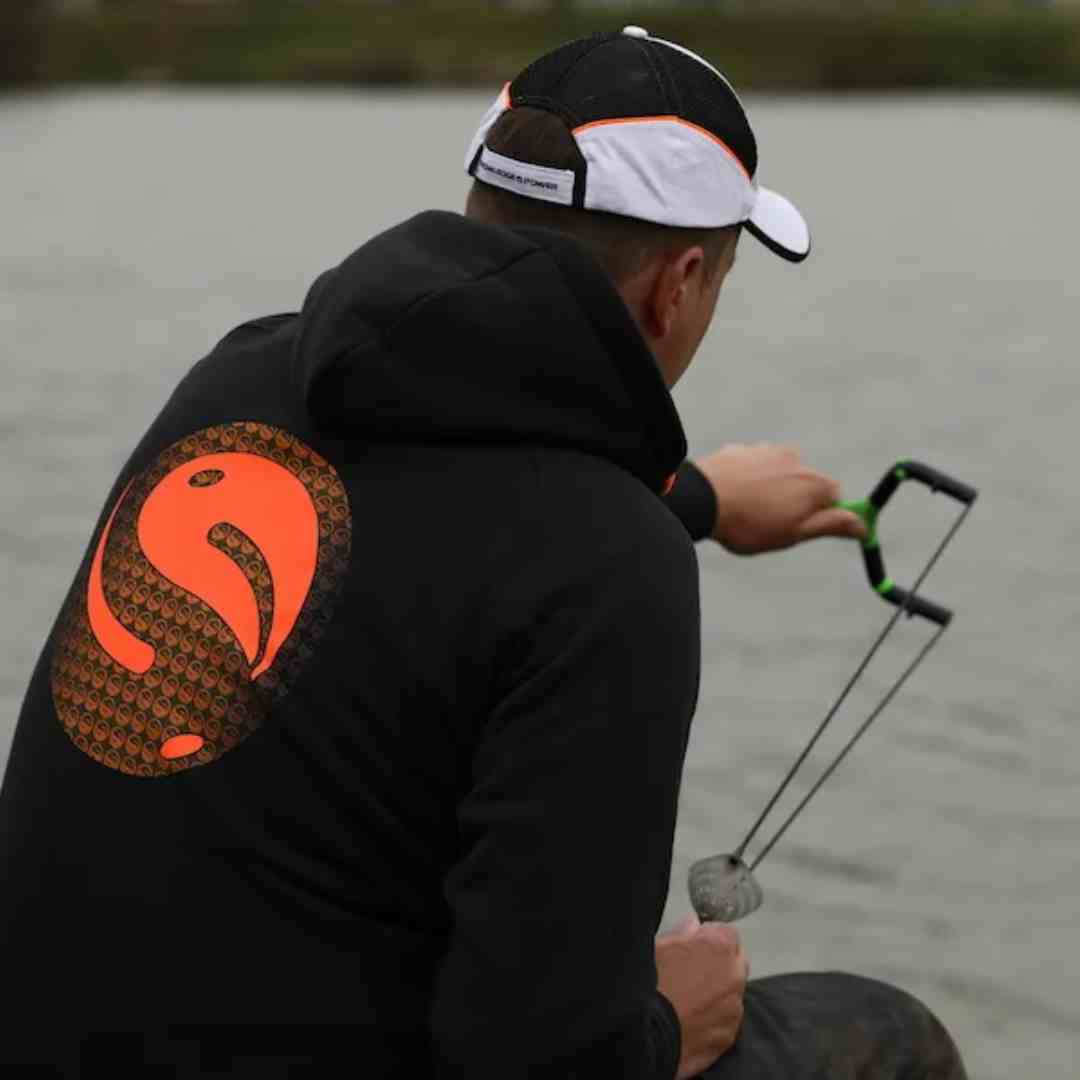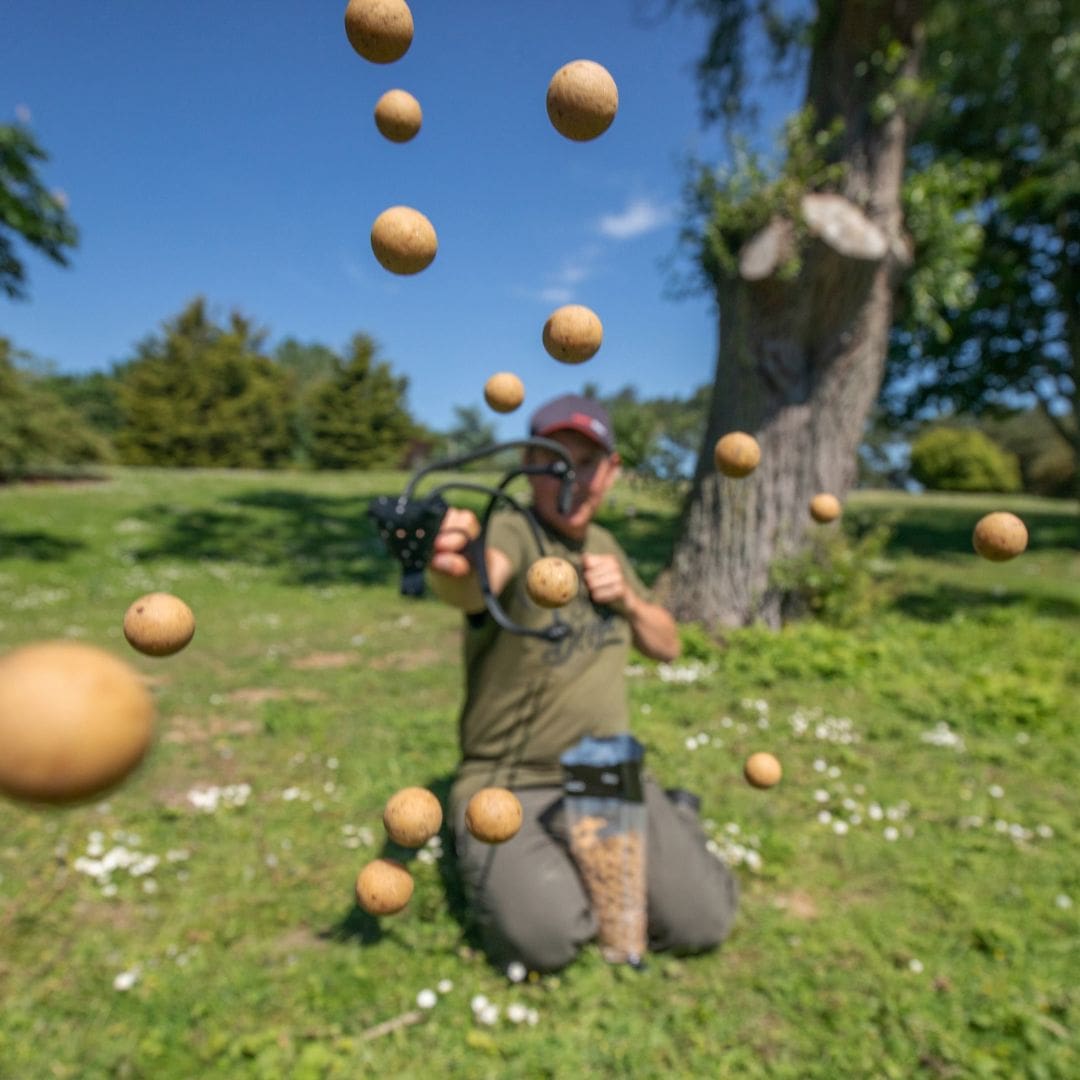How To Choose and Use a Fishing Catapult

Bait delivery is something many anglers may glance over but it can be a vital piece of kit for drawing more fish to your swim. Whether it's with a baiting pole, a bait boat or a trusty catapult.
A fishing catapult, at its core, is a simple yet ingeniously designed device used to accurately and efficiently disperse bait into the water. By allowing precise control over the quantity and distribution of bait, catapults have become an indispensable tool in the angler's arsenal.
The importance of using a fishing catapult lies in its ability to enhance your fishing experience significantly. Whether you’re targeting carp in a commercial fishery or enticing roach in a natural water body, a catapult offers unparalleled precision.
This precision ensures that your bait lands exactly where you need it, creating an effective feeding area to attract fish. The use of a fishing catapult allows for discreet baiting, minimising disturbance in the water and keeping the fish focused on the bait rather than the angler. Join us as we delve deeper into the dynamics of fishing catapults, exploring their various types, and features, and how to select the perfect one for your fishing needs.
Understanding Fishing Catapults
Fishing catapults, while a relatively modern addition to the angler's toolkit, trace their roots back to the fundamental principles of ancient catapult mechanics. It wasn't until the 20th century that this technology was adapted for fishing, evolving into the specialised baiting tool we know today.
Modern fishing catapults have been refined for specific angling purposes, with a focus on delivering bait accurately and efficiently into the water. Their development has paralleled the growth of recreational fishing, reflecting the angler's need for precision and control in bait delivery.
There is a diverse range of fishing catapults available, each tailored to suit different angling scenarios and bait types. The materials used in these catapults are chosen for their durability and performance under varied conditions. High-quality plastics and metals are commonly used for the frame, ensuring strength and longevity, while the elastics are typically made from latex or synthetic materials, offering a balance of flexibility and resilience to withstand repeated stretching and exposure to the elements.
How does the catapult work?
A fishing catapult works by using elastic tension to launch bait over a desired distance into the water. It consists of a Y-shaped frame with elastic bands attached to the two upper ends. A pouch is connected to these elastics where the bait is placed.
When using the catapult, the angler pulls back the pouch with the bait, stretching the elastic bands. Upon release, the elastic's tension propels the pouch forward, flinging the bait out towards the water.
The distance and accuracy of the bait's trajectory are controlled by the strength of the elastic, the amount of tension applied, and the angle at which the catapult is held. This simple yet effective mechanism allows for precise and efficient bait distribution, essential for attracting fish in various fishing scenarios.
How do you use a catapult for fishing?
Carp Fishing: Use a catapult to create a “bed of bait” by consistently targeting the same area, encouraging carp to feed confidently.
Match Fishing: In competitions, use a catapult for 'little and often' baiting strategies. This keeps fish interested without overfeeding them.
Margin Fishing: When fishing close to the banks, use a catapult for precise baiting to avoid spooking fish in shallow waters.
Sea Fishing: Although less common in sea fishing, a catapult can be used from piers or beaches to spread groundbait or chum to attract smaller fish, which in turn can attract larger predators.
Choosing the Right Fishing Catapult
When selecting a fishing catapult, several key factors should be carefully considered to ensure it meets your specific fishing needs.
Types of Catapults for Fishing
Match fishing catapult: Feature small, semi-rigid pouches designed for close-range, precise baiting with smaller baits like maggots or hemp.
Lightweight Catapults: These are excellent for accurately grouping small baits like maggots, hemp, and small pellets. Their sensibly sized pouches dispense the perfect amount of feed to incrementally build up a swim.
Carp catapults: Designed for carp or specimen fishing often boast robust frames and sturdier elastics to handle the demands of launching larger baits, such as boilies, over greater distances.
Boilie Catapults: Ideal for introducing small quantities of bait, boilie pults can reach up to 60 yards with precision. With robust elastic, these catapults can even propel 15 mm boilies over 100 yards.
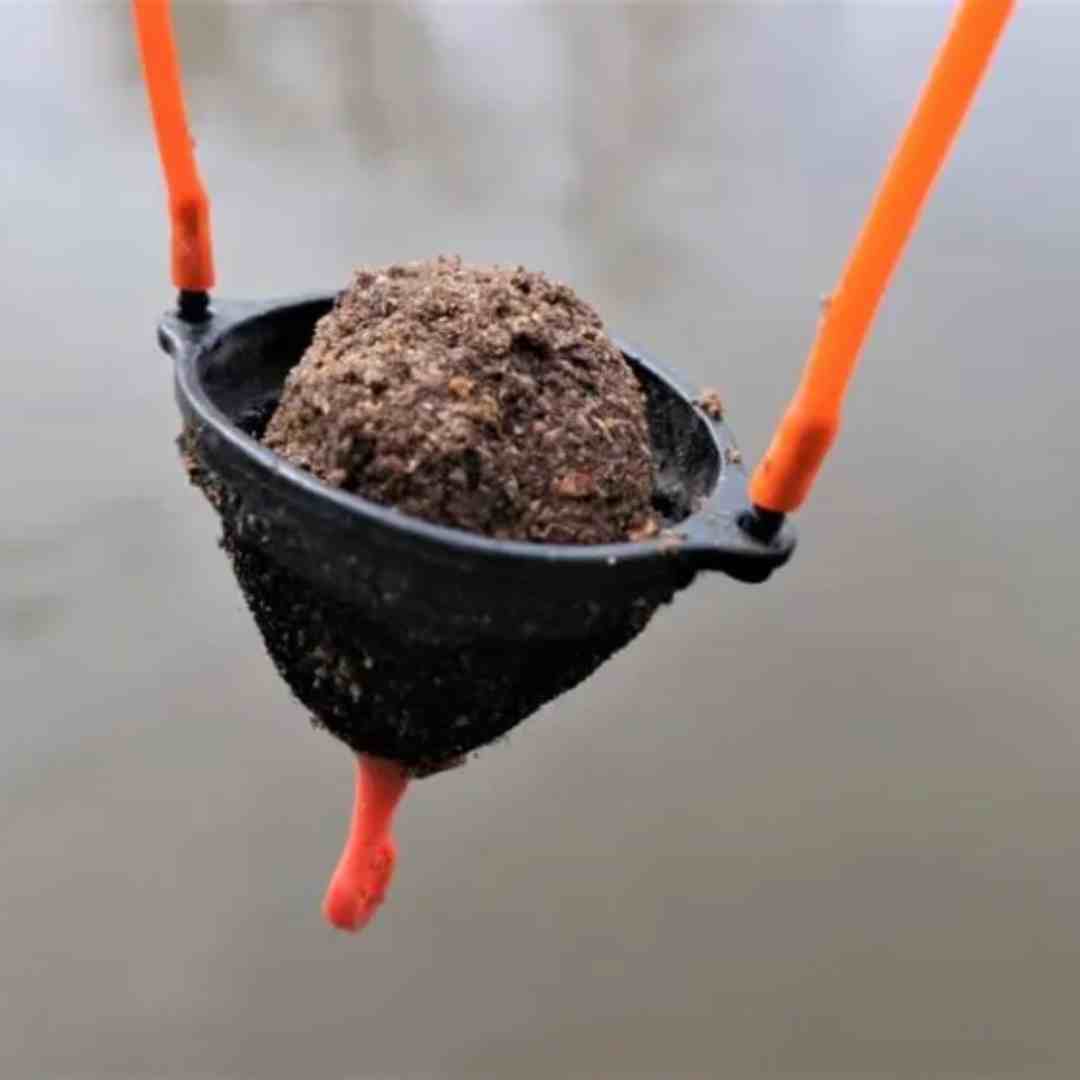

Larger Pouch Catapults: Designed for mass feeding of particle baits such as corn, hemp, and pellets at short range. When large punches are paired with longer elastics, it provides a controlled power release. It maximises distance while maintaining minimal spread and tight grouping.
Size and Weight of a Catapult
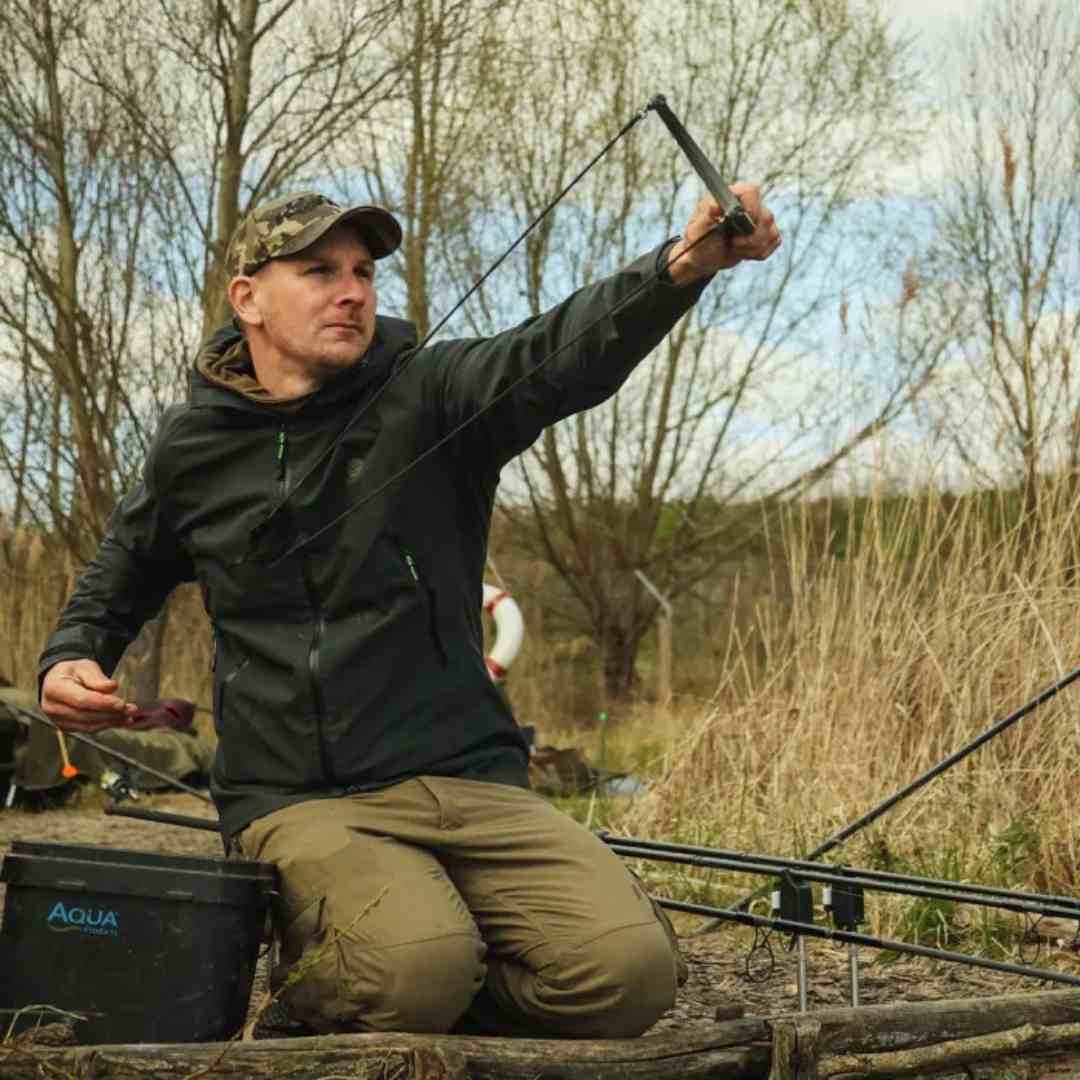

The size of the catapult should be appropriate for the type of fishing you're doing. A compact and lightweight catapult is ideal for short-range baiting and for anglers who prefer a minimal gear setup.
On the other hand, larger catapults are better suited for long-range baiting, where more power is required to reach distant spots.
Catapult Handle and Arm Material
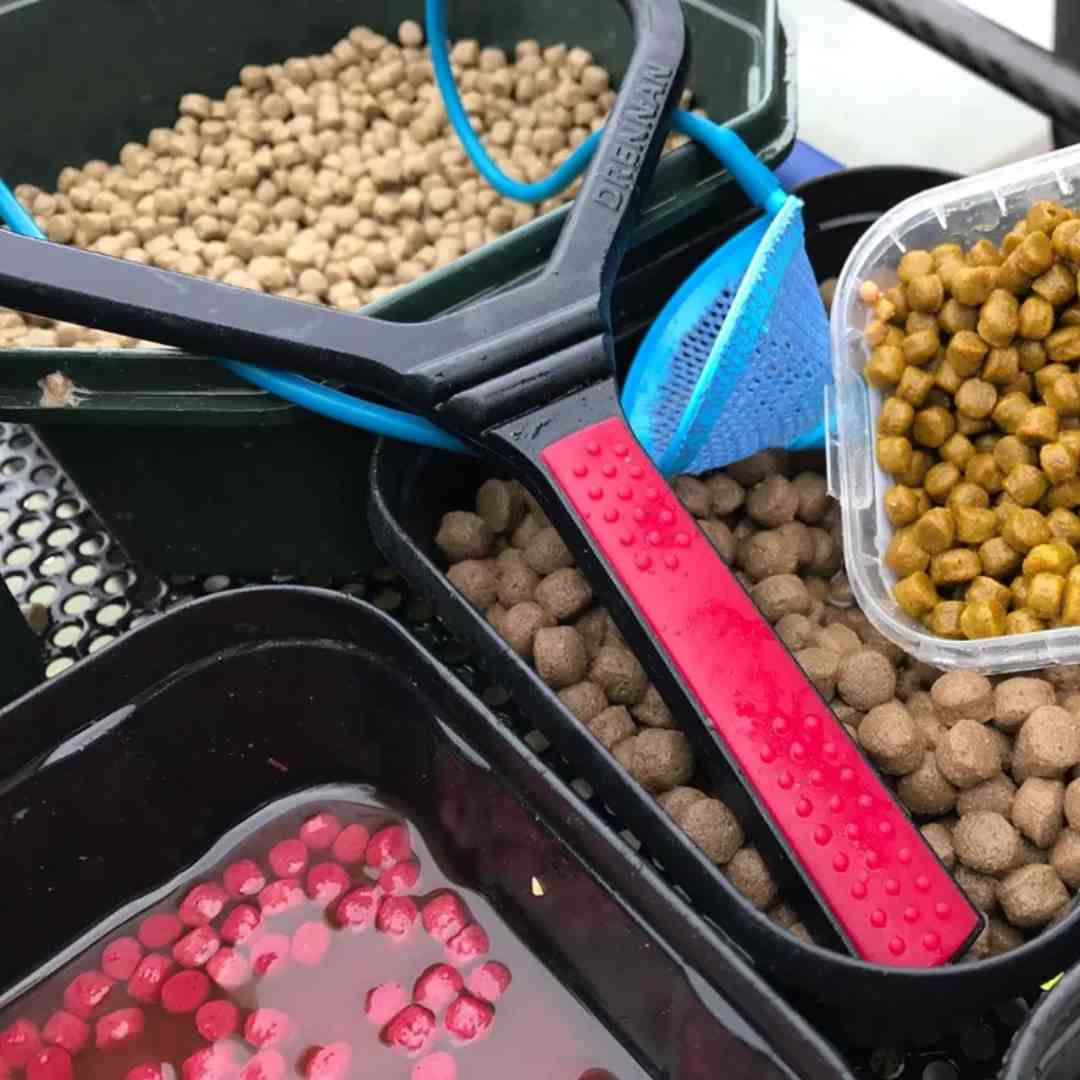

Frames made from high-quality plastics offer a good balance of strength and durability without being too heavy. Stiffer arms on a catapult mean better performance and accuracy. Opting for a catapult with slightly wider arms can also prevent bait spray caused by pouch-arm contact.
The comfort and performance of a catapult also hinge on its handle and arm design. Moulded handles provide strength and comfort, especially with a textured grip for wet conditions. The material should also be resistant to corrosion, especially for anglers fishing in saltwater environments.
Fishing Catapult Elastic
Different strengths of elastics in catapults determine how far your bait can be cast. Stronger elastics generally mean greater distances. The type and strength of the elastic band are crucial. For short-range baiting, softer elastics that offer controlled release are preferred.
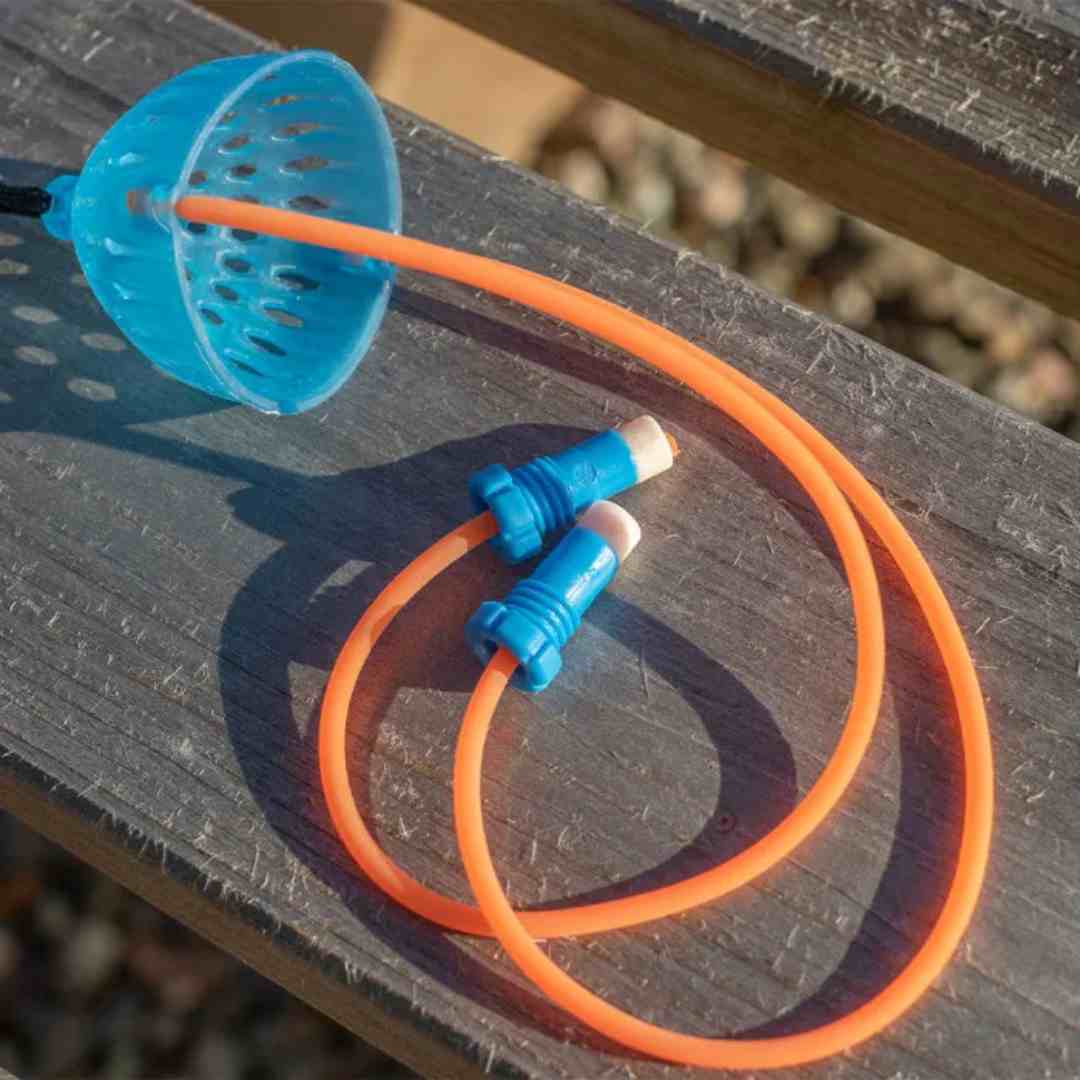

For long distances, stronger, thicker elastics are needed to propel the bait further. The elasticity should be consistent and reliable, ensuring that the bait can be delivered to the same spot repeatedly.
Look for catapults where the elastic can be easily adjusted and replaced when it starts to weaken. Higher-end catapults typically feature superior elastics, reducing the likelihood of breakage. But don’t worry, if your elastics do snap, we've got you covered with replacements.
Best Catapult Pouch Design
The design of the pouch varies depending on the type of bait you plan to use.
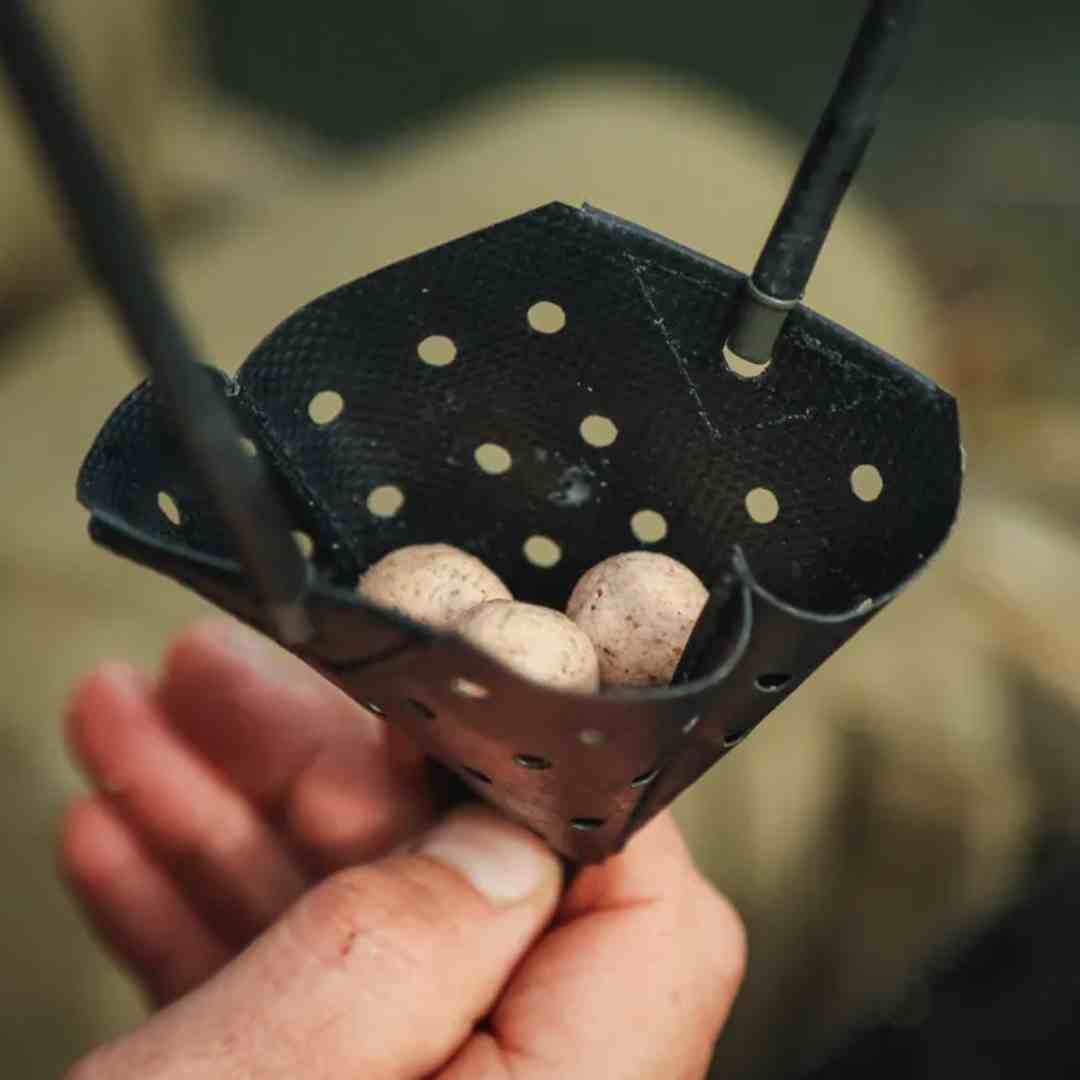

- Smaller, triangular, mesh pouches are ideal for light baits such as maggots and hemp. Mesh pouches can reduce wind resistance for lighter baits
- Larger, mesh pouches are better for heavier baits like groundbait balls, boilies, large pellets and particles
- Rubber pouches are ideal for heavier baits and boilies and reaching distances up to 100 yards.
- Round, open pouches are perfect for groundbait balls as they prevent crushing the bait ball.
Adjustability of Catapults
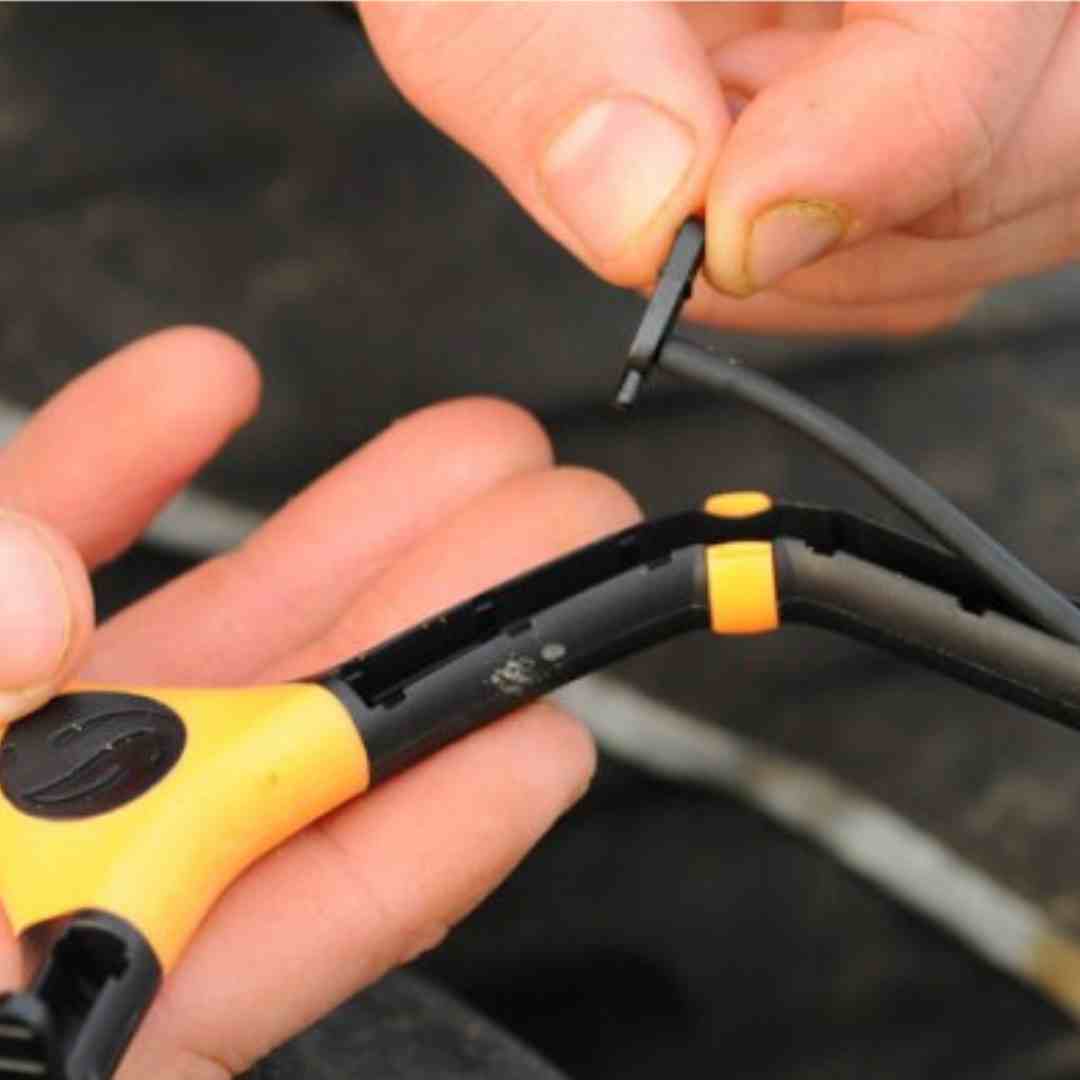

Some catapults come with adjustable features, like the length of the elastic or the ability to change out pouches. This adjustability can be beneficial for achieving the desired range and accuracy, especially in varying fishing conditions.
Comfort and Ergonomics of a Catapult
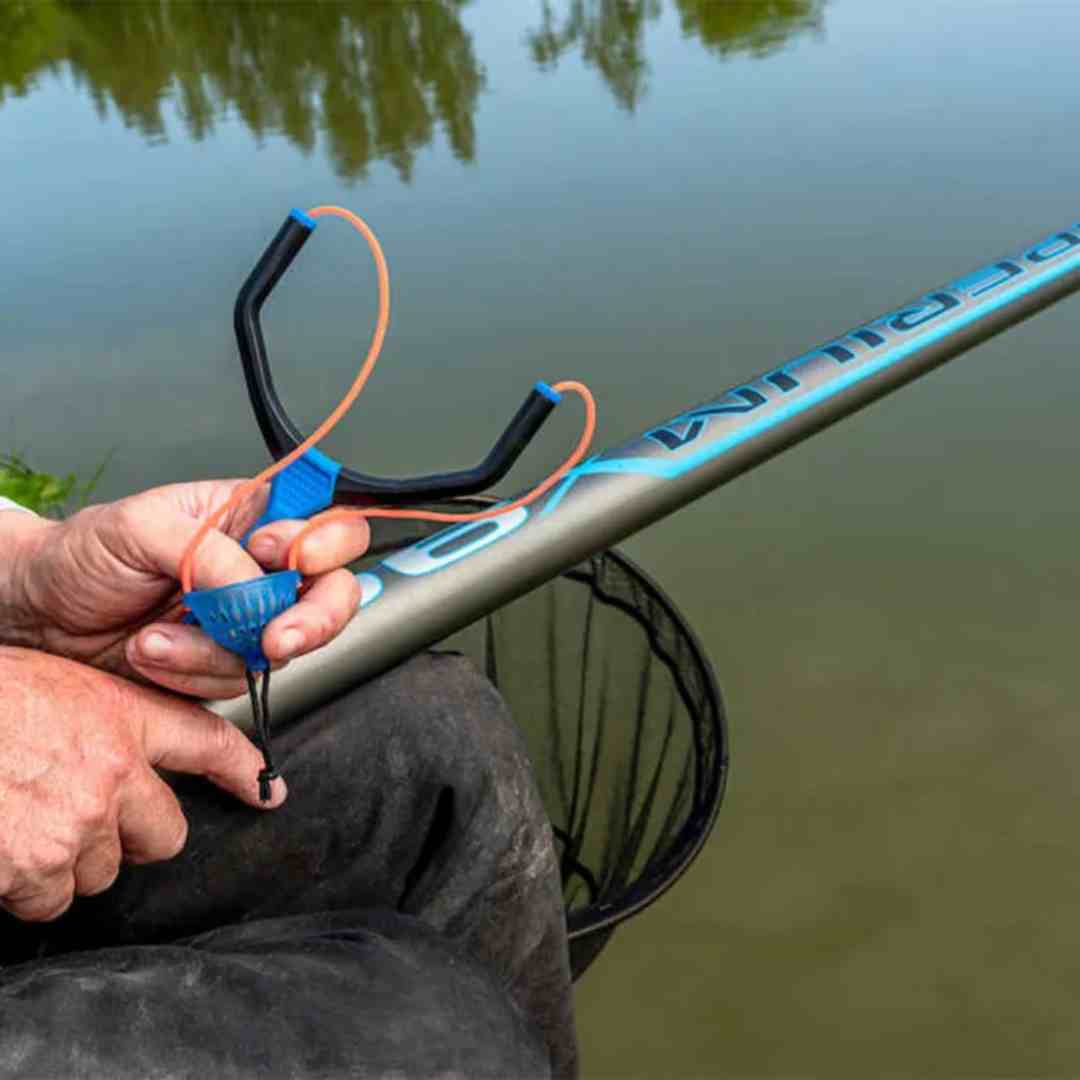

The handle of the catapult should be comfortable to hold, especially during extended periods of use. Ergonomic designs or handles with a non-slip grip can reduce hand fatigue and improve control during the baiting process.
By considering these factors, you can select a fishing catapult that not only suits your specific type of fishing but also enhances your overall fishing experience through improved bait delivery and performance.
Preparing to Use Your Fishing Catapult
Assembling your fishing catapult correctly is crucial for its performance and longevity. Begin by inspecting all parts – the frame, elastic, and pouch – for any signs of wear or damage.
1. Attach the Elastic: Start by attaching the elastic to the catapult's arms. Most catapults have grooves or hooks where the elastic ends can be securely fastened. Ensure that the elastic is evenly balanced on both sides for consistent tension.
2. Fixing the Pouch: Attach the pouch to the other end of the elastic. Make sure it’s firmly secured and centered. For catapults with adjustable pouch positions, set it according to the type of bait you’ll be using and the required range.
3. Check Tension: Once assembled, gently pull back the pouch to check the tension of the elastic. It should feel firm but not overly tight, as excessive tension can lead to early wear or accidental breakage.
4. Final Inspection: Give your catapult a final inspection to ensure everything is assembled correctly and securely. Look for any loose parts or unevenness in the elastic.
Safety Precautions to Take When Using a Fishing Catapult
Wear Protective Eyewear: Always wear some fishing sunglasses to shield your eyes from potential elastic snapbacks or flying bait particles.
Check Surroundings: Before using the catapult, check your surroundings. Make sure there are no people, animals, or obstacles in the direction you’ll be launching your bait.
Proper Handling: Hold the catapult firmly with a steady grip. Keep your holding arm extended and stable to avoid the catapult swinging back towards you.
Load Bait Carefully: When loading the bait into the pouch, do so gently to avoid spilling or accidentally releasing it prematurely.
Smooth Release: Draw the elastic back smoothly and release it gently. A jerky release can cause the bait to scatter unpredictably or the catapult to snap back.
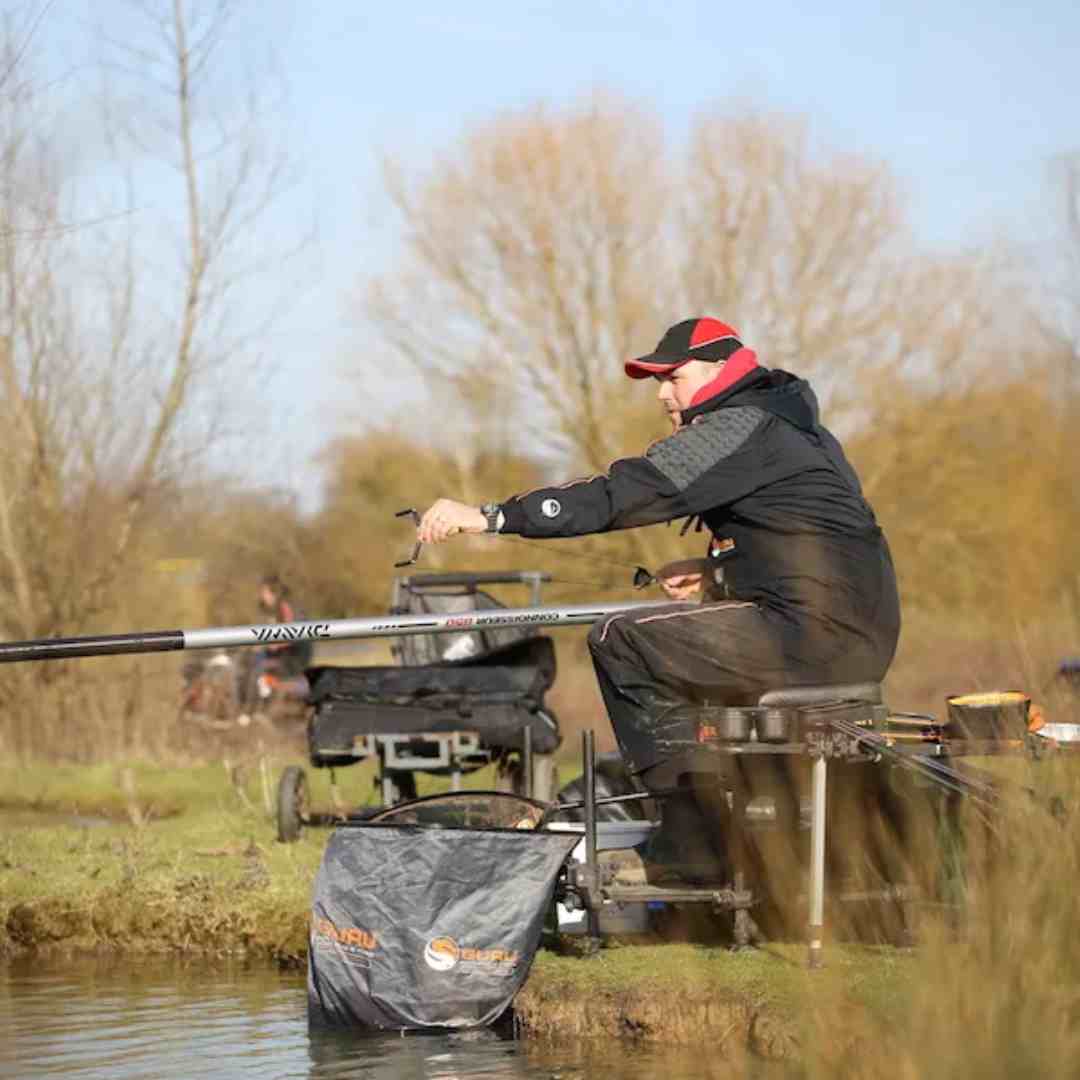

Regular Checks: Periodically check the catapult during use for any signs of wear or damage, especially the elastic and pouch. If you notice any deterioration, stop using the catapult immediately and replace the necessary parts.
Mind the Weather: Be cautious in windy conditions, as this can affect the catapult’s range and accuracy.
How to Use a Fishing Catapult
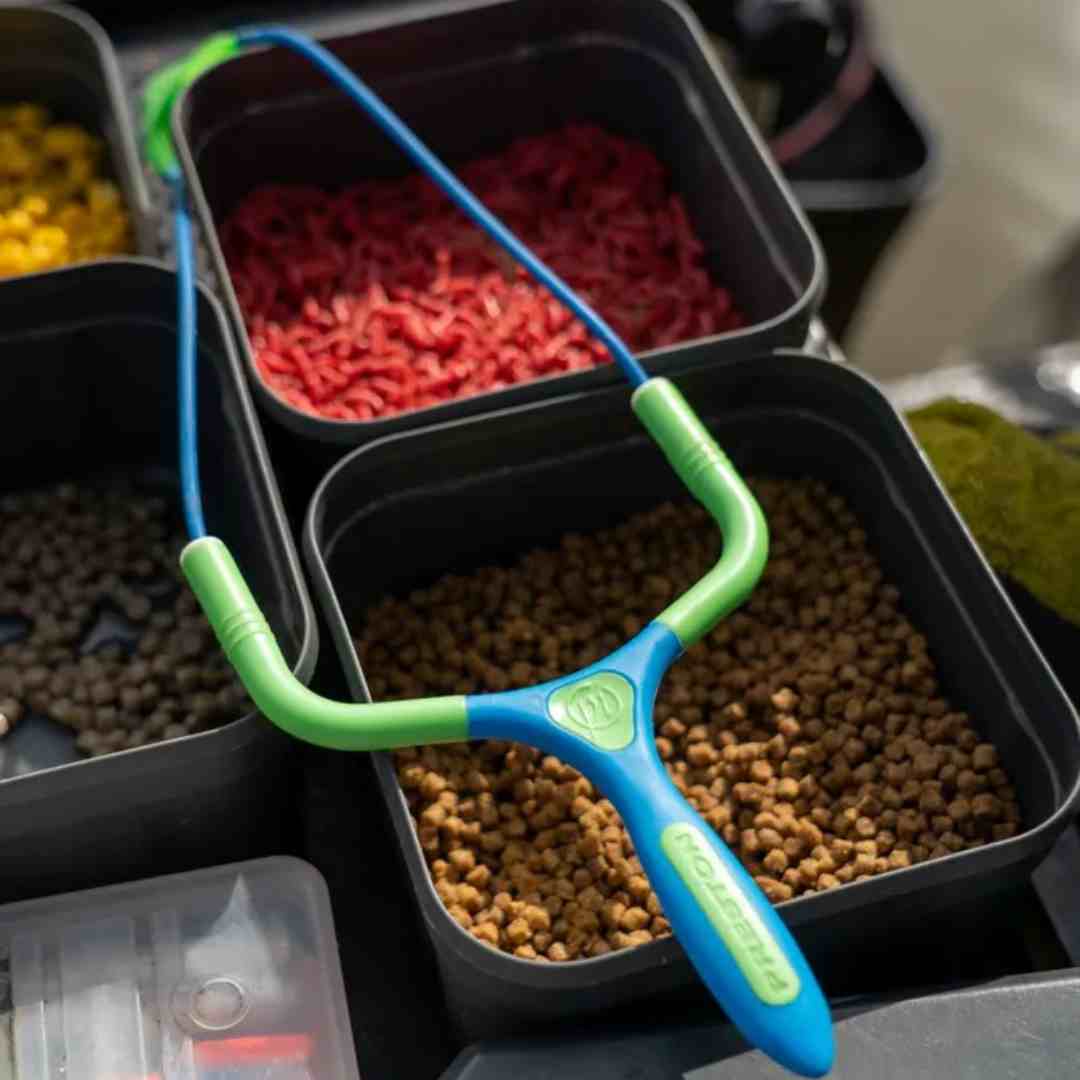

1. Gather Your Bait: Choose the appropriate bait for your fishing session. Ensure it's prepared and within easy reach.
2. Load the Pouch: Hold the handle of the catapult with your dominant hand. With your other hand, gently place the bait into the pouch. Avoid overloading the pouch as it can affect accuracy and distance.
3. Position the Catapult: Stand in a comfortable and stable stance. Face the direction you intend to cast. Hold the catapult out in front of you, arm extended but not locked.
4. Aim: Look towards your target area (the swim). Use the frame of the catapult or a point on the elastic as a reference for aiming.
5. Draw Back the Elastic: With the hand holding the bait in the pouch, pull back the elastic smoothly and steadily. Align the pouch with your eye line to maintain a consistent angle each time.
6. Release the Bait: Release the pouch by smoothly uncurling your fingers. Do not jerk or snap your hand back, as this can scatter the bait or reduce accuracy.
Techniques for Aiming and Distance Control
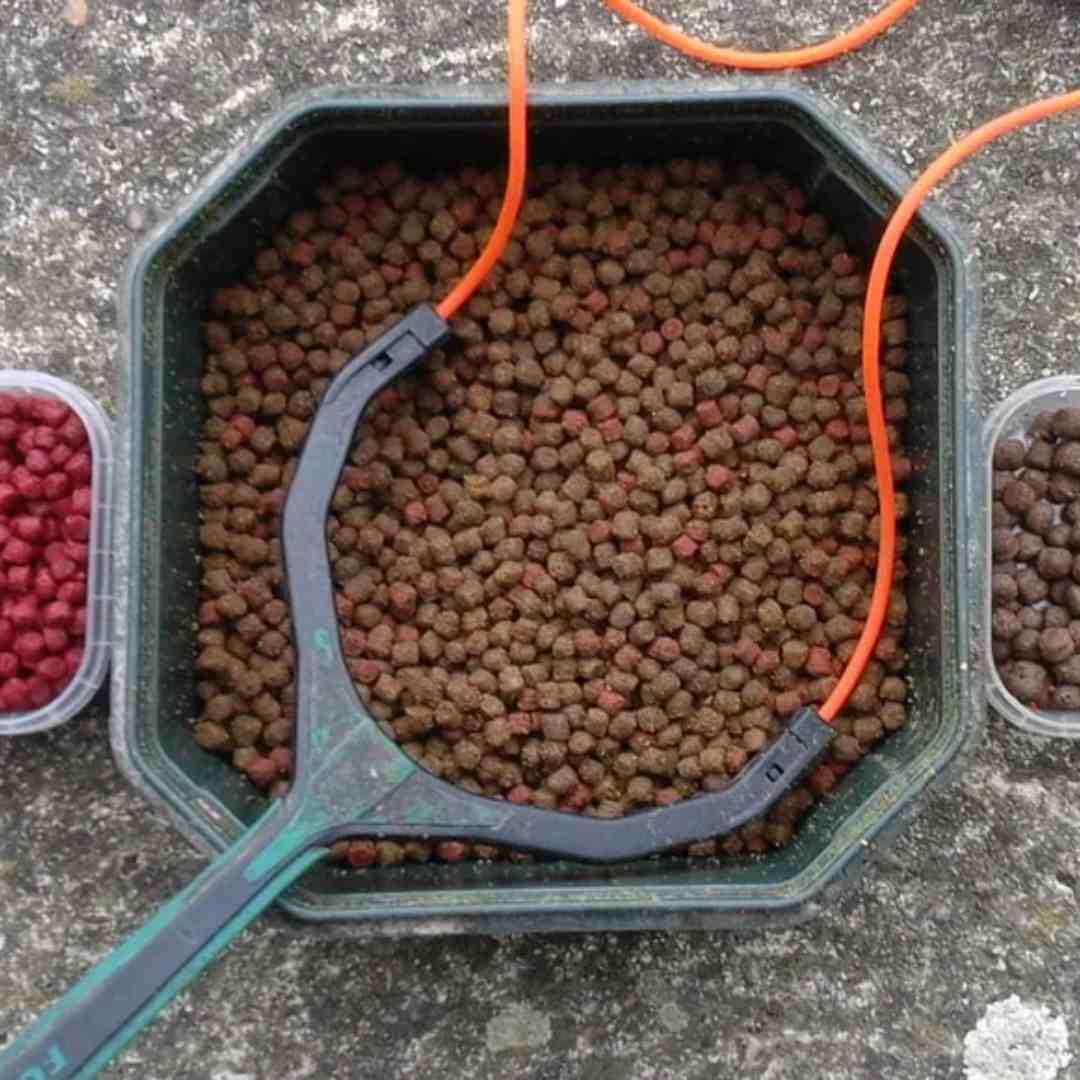

- Consistent Posture: Maintain a consistent stance and arm position with each launch. This consistency is key for accurate aiming.
- Elastic Tension: Control the distance by varying the tension of the elastic. Pull back further for longer distances, less for shorter ones.
- Visual Markers: Use landmarks or features in the environment as reference points for distance and direction.
- Practice: Regular practice will help you get a feel for how different tensions and angles affect distance and accuracy.
Common Mistakes to Avoid While Using a Fishing Catapult
- Overfilling the Pouch: This can lead to bait spilling during launch or uneven distribution upon landing.
- Uneven Elastic Pull: Pulling the elastic unevenly can lead to the bait veering off to one side.
- Choppy Release: A jerky release can disrupt the trajectory and scatter the bait.
- Ignoring Wind Conditions: Wind can greatly affect where your bait lands. Adjust your aim and power accordingly.
- Not Regularly Inspecting the Catapult: Regularly check for wear and tear, especially on the elastic and pouch.
Maintenance and Care of Your Catapult
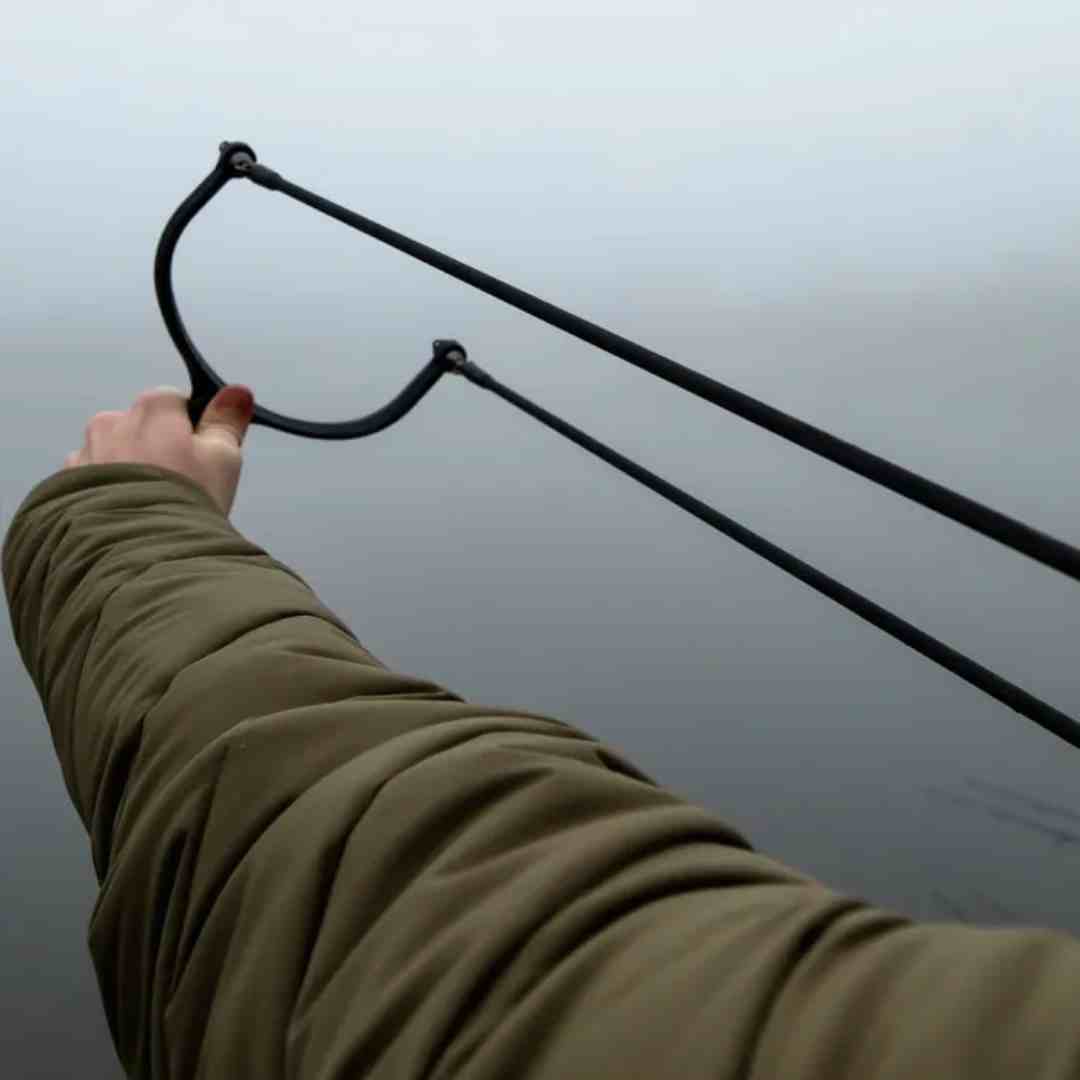

- Rinse with Fresh Water: After each use, especially in saltwater conditions, rinse your catapult with fresh water to remove any bait residue and salt deposits.
- Wipe Down: Use a clean, dry cloth to wipe down the frame, elastic, and pouch. This prevents the build-up of dirt and grime which can degrade the materials over time.
- Dry Completely: Ensure the catapult is completely dry before storage to prevent rust or mildew, especially on metal and elastic components.
- Avoid Direct Sunlight: Store the catapult in a cool, dry place out of direct sunlight, as UV rays can weaken the elastic.
- Hang or Lay Flat: Hang the catapult in an open space or lay it flat in a tackle box to maintain its shape and prevent any warping or stretching of the elastic.
How to Repair Common Issues
Stretching or Wear: If the elastic becomes overstretched or shows signs of wear, it can usually be replaced easily. Most catapults allow for easy swapping of elastics.
Snapping: In case of a snap, remove the broken elastic and replace it with a new one. Ensure the new elastic is of similar length and strength to maintain performance.
Tears or Holes: Small tears in the pouch can often be repaired with a strong adhesive or patch. However, if the damage is significant, it’s better to replace the pouch.
Worn Out: Over time, pouches can wear out and lose their shape. Replacement pouches are available and can be easily attached to the existing elastic.
When should I replace my catapult elastic?
Elastic bands should be replaced if they show signs of fraying, excessive stretching, or have lost their elasticity. Regular replacement ensures consistent performance.
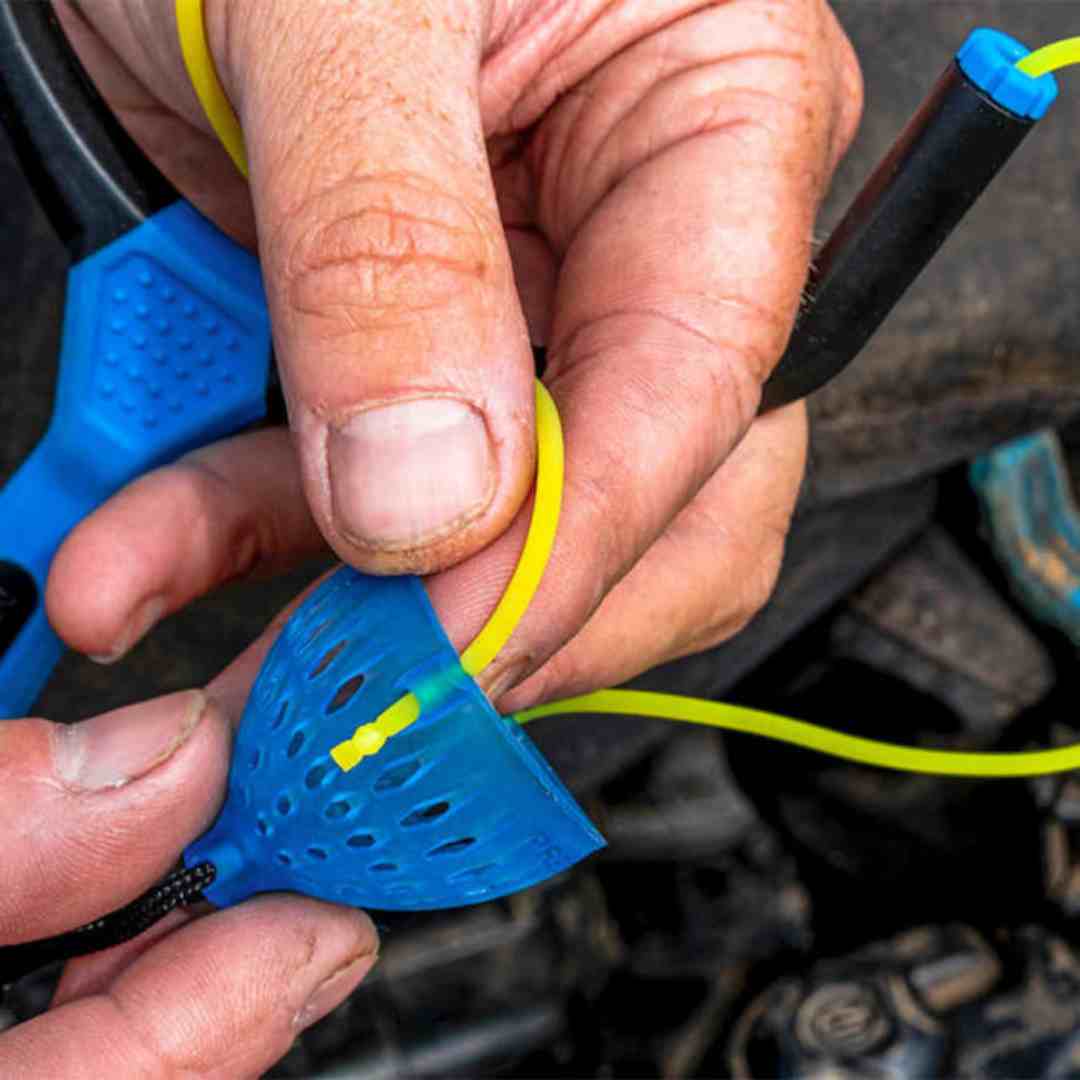

Expert Tips for Using a Bait Catapult
Mastering the Wind: Learn to read and use the wind to your advantage. A slight crosswind can be used to drift bait into the perfect spot. Adjust your aim and power based on the wind's direction and strength.
Varying Bait Quantities: Experiment with different quantities of bait per launch. Sometimes less is more, especially in clear water or when fish are cautious.
Sync with Fishing Rhythms: Coordinate your catapulting with the natural feeding rhythms of the fish. For instance, during dawn and dusk, when fish are more active, frequent baiting can be more effective.
Bait Mixing: Mix different types of bait in your pouch to create a more enticing spread. A combination of groundbait, pellets, or corn can attract a wider range of fish.
Practice Consistency: Work on delivering bait to the same spot consistently. This can be achieved by practising at different ranges and marking your line to remember distances.
We've explored the various types of fishing catapults, emphasising how their size, material, elasticity, and pouch design cater to different fishing needs. We've also delved into the crucial aspects of preparing, using, and maintaining these bait tools, highlighting the importance of safety, proper technique, and regular care to ensure their longevity.
Now, it's time for you, the angler, to take these learnings to the water. Practice and experiment with different catapults and techniques. Remember, each fishing session is an opportunity to refine your skills and discover new ways to use your catapult.
Whether you're aiming for precise baiting in a competitive match or seeking the thrill of a big carp catch, the right use of a fishing catapult can make all the difference. So, grab your brand new catapult, head to the water, and experience the joy of fishing with this simple yet powerful tool.
For those longer casts, check out our guides on Bait Boats and Spod Fishing – another excellent choice for distant baiting.
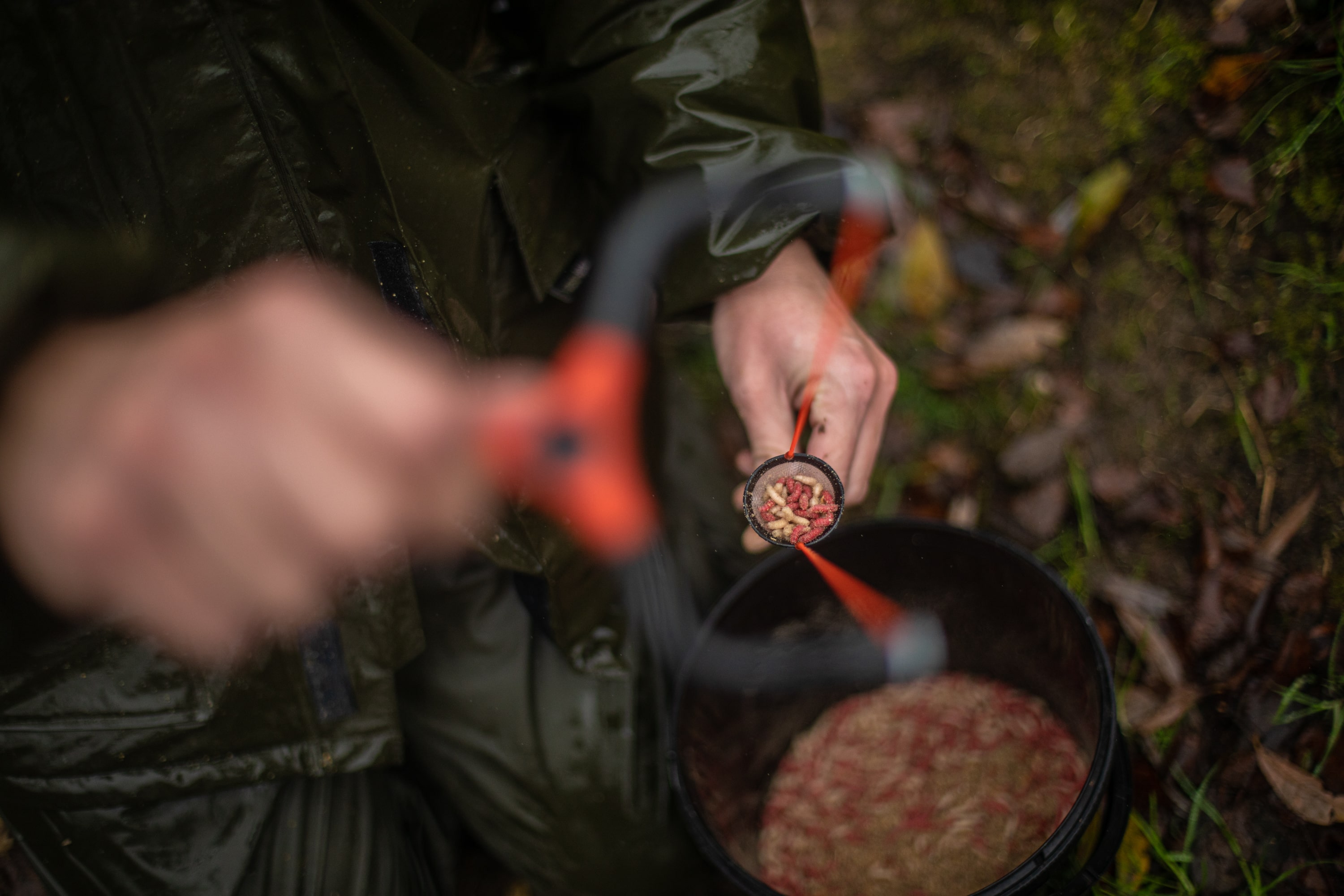

FAQs on Fishing Catapult
How to make a fishing catapult?
- You'll need a Y-shaped sturdy plastic Y-frame, strong elastic bands (latex or rubber), a small, durable pouch (leather or thick cloth), and string or thin rope.
- Cut two equal lengths of elastic. Tie each end securely to the top ends of the Y-frame. Ensure they are firmly attached and of equal length for balanced tension.
- Attach the pouch to the other ends of the elastics using string or thin rope. Ensure the pouch is centred for even bait distribution.
- Gently pull back the pouch to test the tension and ensure everything is securely attached.
Which is Best for Fishing Catapult: Latex or Elastic?
Latex is often considered the best choice for fishing catapults due to its superior qualities. It provides a high level of elasticity and tension, crucial for achieving distance and accuracy in baiting. Latex bands also tend to have greater durability and resistance to wear and tear compared to standard elastic bands.
What is the best catapult for match fishing?
For match fishing, where precision and subtlety are key, match catapults are the ideal choice. Their small, semi-rigid pouches are perfect for introducing modest amounts of bait to gradually build up a swim.
What is the range of a catapult?
Small pouch designs are typically suited for launching boilies as far as 100 yards, making them perfect for extreme-range baiting. A well-crafted design can tightly group baits and launch them up to 30 yards, quickly creating a substantial feeding area.
